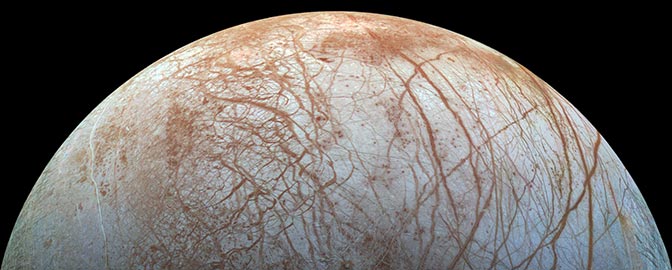Revisiting NASA funding as the government reopens

Written by
Ari Koeppel, PhD
Policy and Advocacy Fellow, The Planetary Society
November 19, 2025
With the U.S. government reopened and funded through Jan. 30, Congress is back to work on deciding how much to invest in federal agencies for fiscal year (FY) 2026, including NASA. Lawmakers have three basic paths:
1: They can extend current levels via a short-term measure;
2: Accept the President’s Budget Request (PBR) with steep science cuts; or
3: Pass a full-year appropriations bill that protects missions and the workforce.
Until Congress acts, uncertainty and disruptions continue to ripple through research programs and mission planning at NASA.
Action Center
Take action right now to help ensure that NASA Science gets the funding it needs.

How we got here
In May, the White House Office of Management and Budget (OMB) proposed cutting NASA’s overall budget to $18.809 billion and NASA’s science budget to $3.908 billion, 24% and 47% below current levels and the lowest inflation-adjusted budget since FY 1961. To meet those limits, NASA identified over 40 major projects, including 23 active missions, for permanent shutdown, risking more than $12 billion in taxpayers’ investments.
Congress ultimately sets agency funding through the Commerce, Justice, Science, and Related Agencies (CJS) Appropriations Bill, one of 12 different appropriations bills. Over the summer, the House and Senate Appropriations Committees (HAC & SAC) separately passed CJS funding bills that rejected OMB’s drastic cuts to NASA. The Senate set NASA at $25.0 billion with $7.3 billion for science; the House matched the top line but set science at $6.0 billion (an 18% cut).
NASA operated in FY 2025 at the same non-inflating FY 2024 levels since a full-year continuing resolution (CR) was passed in March 2025. Those funds expired on Oct. 1, at which point, lacking another short-term CR, the federal government shut down, placing NASA employees on furlough and pausing many NASA-hosted projects. On Nov. 12, the House and Senate together passed another short-term CR that reopened the government until Jan. 31, 2026, along with full-year funding for three of the 12 appropriations bills, none covering NASA. To prevent another shutdown, Congress must pass a full-year appropriations bill or another CR by that deadline.
Why passing a full-year budget matters
Policy uncertainty has had real consequences. Over the summer, OMB instructed agencies to prepare for major cuts without congressional approval, which raised the specter of mission shutoffs, with delayed NASA grant solicitations and fewer awards (an 80% cut) offered this year compared with prior years. A dispute over OMB’s authority to steer agency planning without final appropriations spurred a bipartisan proposal from the Planetary Science Caucus to bar irreversible terminations during a CR by including specific "anomaly" language. Although this anomalous language was not adopted in the CR passed on Nov. 12, the message was clearly sent to OMB.
The worst of the feared mission terminations were avoided when Acting NASA Administrator Sean Duffy directed the agency to plan for the House-defined funding levels rather than the president’s budget request. And during the shutdown, NASA notably directed employees to maintain baseline mission operations. Nonetheless, some level of reorganization and reductions in force have been occurring at NASA centers, including during the shutdown, with potentially damaging effects to science missions. Passing full-year appropriations is necessary to guide NASA and avoid harmful, potentially irreversible terminations.
How the House and Senate bills differ
Beyond the $1.3 billion discrepancy in NASA science funding, the core differences between the House and Senate bills come down to how explicitly they shield missions and research from cuts. The Senate rejects all mission and program terminations that would result from the PBR and uses directive language to make congressional intent unambiguous. The House rejects most terminations and sets useful funding minimums, but at generally a lower funding level that is most pronounced in Earth Science and Heliophysics.
Missions protected in the Senate bill, but not the House’s, include vital Earth observing satellites, three highly anticipated missions to Venus, the Habitable Worlds Observatory, and ongoing missions studying Mars, the outer planets, and the Sun. The House bill funds the ambitious Mars Sample Return project, while the Senate’s does not, and offers somewhat more funding for the Nancy Grace Roman Space Telescope. The Senate offers greater support for research programs in astrophysics, heliophysics, and planetary defense, among others. The House gives more emphasis to space weather monitoring and disaster-responsive Earth science.

What has to happen next
Typically, under the Regular Order of appropriations, the House and Senate pass bills in full chamber and then hash out differences during Conference, which takes place over weeks. Because the House and Senate set similar NASA toplines, the House’s lower science total reflects higher human spaceflight funding. With supplemental funding for Artemis and other human spaceflight programs already enacted in The One Big Beautiful Bill Act, reconciling the differences between the House and Senate budgets, at least when it comes to NASA, could be straightforward. If talks stall, another short-term CR is possible, but with three bills already passed, there is now real momentum to finish FY 2026 appropriations. OMB is already preparing its FY 2027 budget, and swift full-year appropriations would signal that cuts like those proposed for FY 2026 lack sufficient support in Congress.
Congress is also considering a new NASA Authorization, the companion law that sets policy direction. Congress has not passed a NASA authorization since 2022, but with major shifts underway in science and industry, and the possibility of a new NASA Administrator, an updated authorization would help NASA managers plan for long-term priorities.
The House and Senate have both rejected the deepest proposed cuts and moved to protect NASA’s science portfolio. The Senate bill offers the strongest near-term protection for missions and research, while the House bill provides important minimum-funding guardrails. The sooner Congress finalizes a full-year budget with clear intent, the stronger NASA can deliver new discoveries, training for the next generation, and advances in U.S. leadership in space.
For program-by-program numbers, see our policy team’s breakdown.
Support our core enterprises
Your gift today will go far to help us close out the year strong and keep up our momentum in 2026.
Donate

 Explore Worlds
Explore Worlds Find Life
Find Life Defend Earth
Defend Earth

